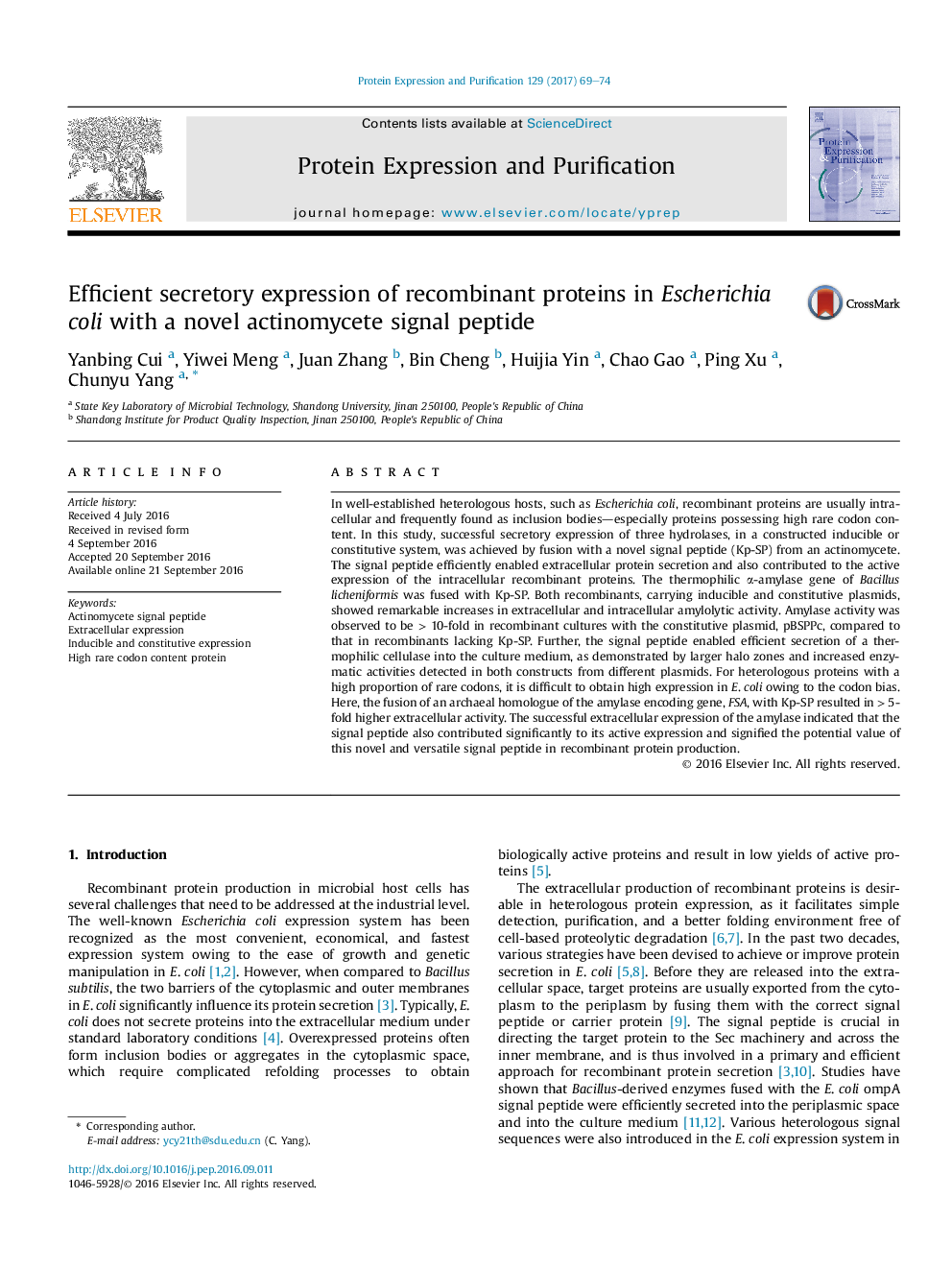| Article ID | Journal | Published Year | Pages | File Type |
|---|---|---|---|---|
| 5516167 | Protein Expression and Purification | 2017 | 6 Pages |
â¢A novel actinomycete signal peptide was effective in E. coli expression.â¢Three hydrolases were secretory expressed by fusing with the signal peptide.â¢Both inducible and constitutive systems were successfully constructed.
In well-established heterologous hosts, such as Escherichia coli, recombinant proteins are usually intracellular and frequently found as inclusion bodies-especially proteins possessing high rare codon content. In this study, successful secretory expression of three hydrolases, in a constructed inducible or constitutive system, was achieved by fusion with a novel signal peptide (Kp-SP) from an actinomycete. The signal peptide efficiently enabled extracellular protein secretion and also contributed to the active expression of the intracellular recombinant proteins. The thermophilic α-amylase gene of Bacillus licheniformis was fused with Kp-SP. Both recombinants, carrying inducible and constitutive plasmids, showed remarkable increases in extracellular and intracellular amylolytic activity. Amylase activity was observed to be > 10-fold in recombinant cultures with the constitutive plasmid, pBSPPc, compared to that in recombinants lacking Kp-SP. Further, the signal peptide enabled efficient secretion of a thermophilic cellulase into the culture medium, as demonstrated by larger halo zones and increased enzymatic activities detected in both constructs from different plasmids. For heterologous proteins with a high proportion of rare codons, it is difficult to obtain high expression in E. coli owing to the codon bias. Here, the fusion of an archaeal homologue of the amylase encoding gene, FSA, with Kp-SP resulted in > 5-fold higher extracellular activity. The successful extracellular expression of the amylase indicated that the signal peptide also contributed significantly to its active expression and signified the potential value of this novel and versatile signal peptide in recombinant protein production.
